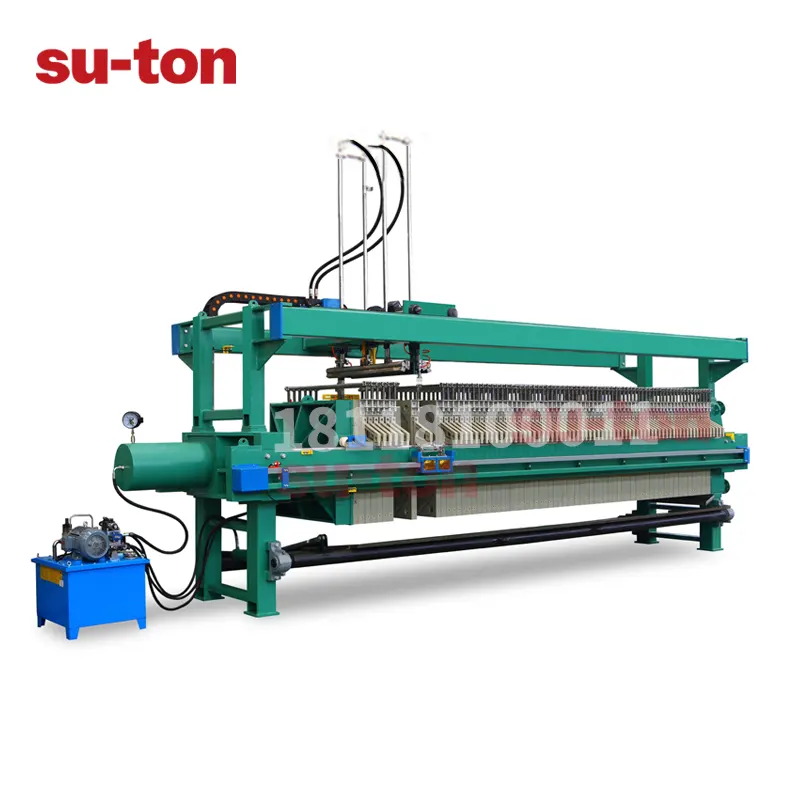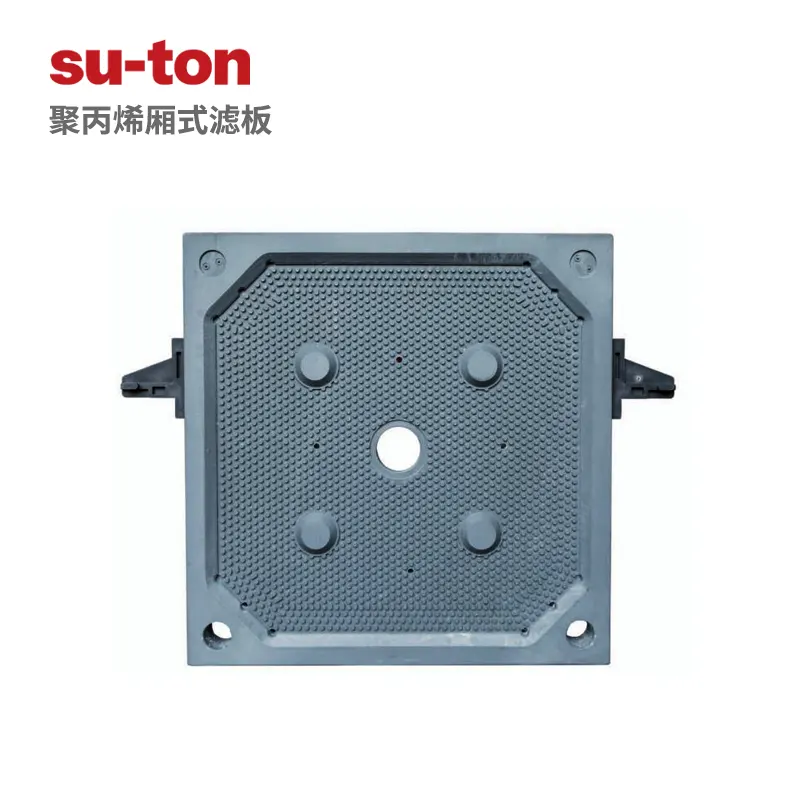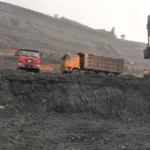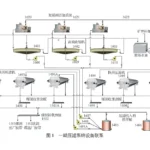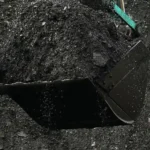introductory
At present, the fine coal slurry treatment process commonly used in power coal processing plant is mainly to firstly introduce the coal slurry water into the concentration pool for concentration and settlement, and then the bottom stream of the concentration pool is fed into the pressurised filter for filter dewatering treatment to form low-ash coal slurry products, and the clean recycled water is returned to be used again. Coal processing plant commonly used fine coal slurry dewatering machinery are mainly vacuum filter, pressurised filter, belt filter press and so on. Due to the unstable condition of coal quality in power coal beneficiation plant, it leads to the most problems and difficult to solve in the coal slurry water system link. Many coal beneficiation plants have low production efficiency, abnormal operation of the end coal system, low clarification of circulating water, and their problems are all in the coal slurry water treatment link. Therefore, many power coal preparation plants adopt the process of not washing the final coal to avoid the treatment of coal slurry water, but this process leads to the reduction of the washing rate of raw coal and the heat content of the product can not meet the standard and other problems. Haragou Coal Processing Plant, which belongs to Shenhua Shendong Coal Group, is a large mine-type coal processing plant with a capacity of 14Mt/a. The plant adopts a lump coal rewashing process. The plant adopts the main re-election process of lump coal heavy media shallow tank, the end coal adopts the pressurised two-product heavy media cyclone sorting process, the coarse coal slurry is processed by centrifugal dewatering, and the fine coal slurry is dewatered and recovered by the thickener after concentration in the thickener and pressurised filter. The final coal system can basically realise the effect of continuous full-entry washing, but the operating load of pressurised filter is still heavy in the process of washing. Although the parallel concentration effectively alleviates the impact of very fine mud on the pressurised filter, but the pressurised filter still exists in the filtrate concentration is high, very fine mud in the concentration pool cycle, so consider adding 2 sets of plate and frame pressurised filter to deal with very fine mud in the system, this move in the relaxation of the sieve after the renovation, can be a pressurised filter stopped, the system only needs to run three pressurised filters and two plate and frame pressurised filter. Plate and frame filter presses have relatively less stringent requirements on the particle size composition of the material and are more suitable for processing very fine particles. Through this transformation, the plant can realise the classification treatment of fine coal sludge, and at the same time realise the tandem use of thickening tanks in the final coal system, with one section of the bottom stream using pressurised filters for treatment, and the second section of the bottom stream using plate and frame for treatment. The purpose of the renovation is to give full play to the advantages of different equipments for the treatment of coal slurry of different particle size levels, and to realise cost reduction and benefit increase.
1.0 Production status
1.1 Process flow Haragou Coal Processing Plant is a mine-type coal processing plant, and the raw coal of the mine is mainly long flame coal with low degree of metamorphism and unbound coal. The sorting process of the final coal system is as follows: the final coal after classification in the screening workshop passes through 1.5mm desliming sieve to desliming beforehand, and the coal slurry water under the sieve is classified by the classifying cyclone, and the underflow of >0.35mm particle size becomes coarse coal slurry, which is recovered by the coal slurry centrifuge; the overflow of <0.35mm particle size enters into the thickening pool for settling, and the bottom flow of the pool is treated by 4 sets of pressurised filters, and the overflow of the pool enters into the recycling pool as system cleaning water, which is used as system cleaning water. The overflow from the concentrator enters into the circulating pool, which is used as water for system cleaning and water spraying for de-mediation. The process flow of coal slurry water treatment in this plant is shown in Figure 1. From the overall process point of view, the whole process of coal slurry water solid-liquid separation and pressure filtration recycling, but from the actual production status quo, due to the high content of fine coal slurry in the system, resulting in a long time in the thickener is in a high level of operation, rake rack current often overloaded easy to lead to the rake rack pressure death and other system failures occur. At the same time with the Haragou mine 1-2 coal mining, fine coal sludge in a large number of gangue sludge due to gangue mud formation of very fine gangue mud, affecting the rate of coal slurry water settlement. As the very fine coal sludge in the system is difficult to settle the filter press to recover, so according to the production and operation of the plant to see the end of the coal system of the filter press working conditions, the concentration effect of the concentration pool, the clarification of the circulating water.
1.2 Problems
Unable to adapt to the gangue mud and raw coal quality changes: Haragou coal preparation plant is mainly into the wash Haragou coal mining raw coal. When the amount of raw coal gangue, gangue sludge phenomenon is more serious, the concentration pool due to the parallel use of some of the fine coal sludge and gangue sludge settlement is incomplete through the overflow mixed into the circulating water system affects the system de-mediated water spray effect, resulting in unnecessary media loss. Especially Haragou coal mine in the move inverted face, the original coal quality situation is not stable, coal preparation plant coal slurry treatment system can not adapt to the original coal quality changes, the end of the coal slurry can not be processed in a timely manner, the system protection action is frequent, in serious cases, we can only take the end of the coal does not wash the way to reduce the quality of the product as the cost to ensure the normal operation of the entire coal preparation plant. Difficulty of unloading filter press blowback: the fine coal slurry particles in the end coal system enter the pressurised filter after concentration, this part of the particles have a larger surface area of more adhering agents, resulting in the formation of a larger viscosity of the cake, resulting in difficulties in unloading filter press blowback and long time adherence to the surface of the filter cloth, which makes it easy to wear and tear, and frequent replacement of the filter cloth results in the loss of manpower and financial resources. At the same time, the continuous rotation of the main shaft of the pressurised filter causes the cake adhering to the surface of the filter cloth to become thicker and thicker, and the main shaft of the filter press causes the under-speed protection action due to the excessive resistance, and the filter press stops malfunctioning. After the unloading of the cake, a large amount of coal sludge adheres to the scraper on the scraper slide when it passes through the sludge scraper of the pressurised filter. As the pressurised filter is a sealed equipment, the daily inspection of the post driver can not observe the running condition of the coal slurry scraper, and the slurry adhering to the slideway will lead to scraper chain drift, scraper under-speed protection action, scraper chain breakage and other failures after the slurry has piled up to a certain extent. Especially the time to deal with the fault after the scraper breaks the chain is about 2h, which seriously affects the operation efficiency of the filter press. Difficulty in discharging: the discharging mode of pressurised filter is generally discharging by material level meter, due to the presence of a large number of fine coal sludge with strong adhesion in the filter cake, the material level meter in the discharging bin will often be inaccurate due to the sludge adhering to the surface leading to the inaccurate display of the material level meter and can not be discharged normally. The upper and lower gates can't be switched normally: the unloading method of pressurised filter is more complicated, which needs to be completed by the mutual cooperation of the upper and lower gates in the sealed discharge bin. As the filter cake contains a large number of very fine coal sludge particles, the upper and lower gates will bring a large number of very fine coal sludge particles to the hydraulic drive cylinder of the gate in the process of frequent opening and closing. As the gate is driven by hydraulic pressure, the fine coal sludge brought in is compressed into extremely dense coal sludge blocks under the back and forth action of the gate, which will lead to the upper and lower gates not being able to open and close normally to discharge the material after reaching a certain amount, resulting in the failure of the filter press to stop.
2 Analysis of particle size composition of coal slurry water
The particle size composition of coal slurry in the coal slurry water largely determines the difficulty of thickening, clarification, dewatering, filtration and other operations of the coal slurry water. Therefore, it is very important to experimentally study the particle size composition of coal slurry water in coal preparation plant, especially the distribution of very fine particles. Haragou coal preparation plant after four sets of relaxation screen transformation, the end of the coal system can basically achieve the effect of sustained full into the wash, but in the process of washing into the pressurised filter is still a heavy load, and the current coal preparation plant end of the coal system concentrator is used in parallel to avoid the use of tandem in the process of the second section of the concentration of the bottom stream of the very fine particles in the content of the high, resulting in the decline in the efficiency of the pressurised filter and other issues. Design of coal slurry water treatment process, need to analyse the composition of coal slurry particle size in coal slurry water. The working condition of pressurised filter has a great relationship with the particle size of the incoming material, and when there are more very fine particles, the processing capacity and effect will be significantly reduced; plate and frame filter press is relatively less strict on the requirements of the particle size composition of the material, and it is more suitable for dealing with very fine particles. As all materials can only enter the pressurised filter processing, the composition of coal slurry particle size has a greater impact on its working conditions. The feed source of the final coal thickener of Haragou coal processing plant is mainly the overflow of hydroclassification cyclone and the tailings of magnetic separator. There are three hydroclassification cyclones in the final coal system, with a capacity of 250m3/h and a classification size of 0.2mm.The composition of the feed size of the hydroclassification cyclone of the plant is shown in Table 1.
From the composition of hydrocyclone feed particle size can be seen in the feed <0.045mm particle size of very fine coal slurry accounted for the level of 11.22%. The feed through the hydrocyclone classification through the pumping transfer to the concentration pool, concentration and settlement and then pumped to the filter press into the barrel, the process of transporting the coal slurry in the fine particles increase again, so in fact, into the filter press in the very fine coal slurry is much larger than this value. This value. According to Stokes' formula, the settling speed of particles is proportional to the square of its diameter. In the thickening pool, the very fine particles in the slurry water are subject to less gravity, the Brownian motion is more intense, so that the very fine particles remain suspended for a longer period of time. Haragou coal plant concentration pool height at the beginning of the design did not take into account the increase of very fine particles, so most of the very fine particles do not have time to concentrate and settle through the concentration pool overflow into the circulating water system resulting in the phenomenon of black circulating water in the coal plant. Therefore, through the analysis of the particle size composition of the plant's coal slurry water, it was concluded that the plant's original parallel use of the thickener process is not suitable for the current coal quality. In order to ensure that the plant's coal slurry water processing link has sufficient processing capacity, it should be redesigned and adjusted through the process of the final coal thickening and filtering system to ensure the efficient operation of the plant's final coal system.
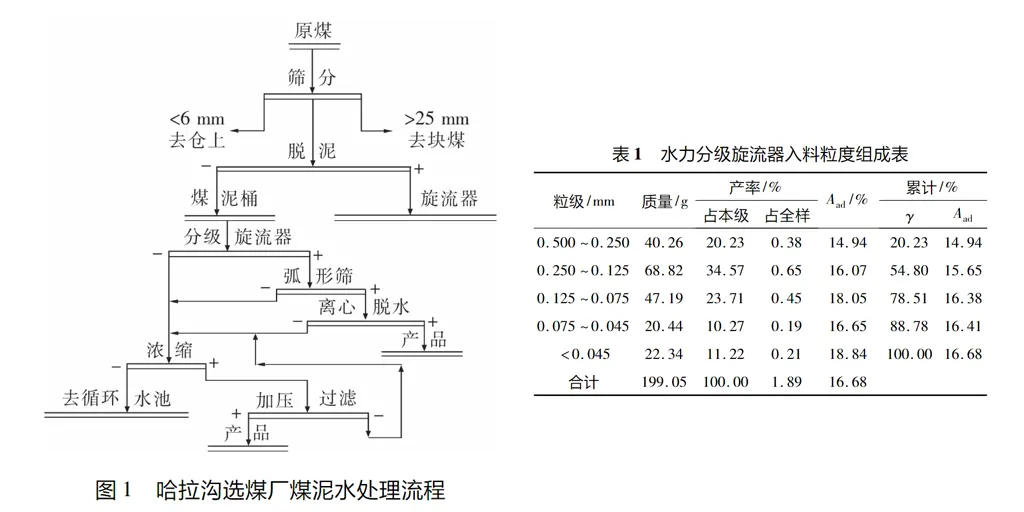
3.0 Optimisation of programme design
3.1 Coal slurry water classification link transformation thickener feed source is mainly the overflow of the classification cyclone, which directly determines the particle size composition of the material into the thickener and other properties. Haragou coal preparation plant end coal system is currently using 3 sets of Sea King hydroclassification cyclone, classification size 0.2mm, processing capacity of 250m3/h, processing capacity basically meet the system load requirements. Each cyclone is equipped with 2 sets of Tianma curved sieve below, with a slit size of 0.35mm. raw coal is pre-screened by relaxation sieve in the screening workshop, and pulverised coal of less than 6mm particle size is directly sold on the product silo, so the amount of coarse coal sludge in the final coal system is not very large. After the coal slurry water passes through the hydraulic classification cyclone, the coarse coal slurry with particle size >0.5mm enters into the concentration pool with about 3.41%. A certain amount of coarse coal slurry in the coal slurry water can help the coal slurry particles and flocculant to form loose, porous flocs with three-dimensional spatial structure. Therefore, mixing a certain amount of coarse coal slurry in the feed of the thickener helps to accelerate the settling rate of coal slurry water. Under the condition of ensuring that the cyclone underflow is umbrella spraying, the cyclone angle cone ratio is adjusted appropriately so that part of the >0.5mm particle size coarse coal slurry enters the thickener feed to improve the effect of coal slurry water settlement, and at the same time reduces the amount of fine coal slurry in the coal slurry centrifuge and reduces the solids in the centrifugal liquid.
3.2 Improvement of coal mud water concentration and sedimentation link Concentration pool is a device for continuous concentration of coal mud water through the use of some chemicals. Coal slurry water precipitation in the thickener is mainly divided into 5 zones, from top to bottom as follows: clarified water zone, free settling zone, transition zone, compression zone, concentrate zone. The movement speed of coal slurry particles in the thickener is related to the particle size of coal slurry, density, concentration of coal slurry water, temperature and other factors. There are 3 thickening ponds in the end coal system of Haragou coal preparation plant, with a diameter of 30m, a single hourly processing capacity of 1000m3, and each thickening pond is equipped with 2 sets of bottom flow pumps. At present, it is produced in a way of one reserve and two uses, the two working concentrators are fed in parallel at the same time, and the reserve concentrator is generally used as a reservoir and regulating the level of circulating water of the end coal block. The advantage of using the thickening ponds in parallel is that it can ensure the stable feeding of the filter press and the level of circulating water, but there are problems such as untimely and incomplete settling of coal sludge. In view of the above problems, the plant has changed the parallel use of thickening ponds to series use, with the coal slurry water firstly passing through No.1 and No.2 ponds for one-stage thickening, and the overflow of one-stage thickening then enters into No.3 thickening pond for two-stage thickening. The dosing method of the concentration pool is multi-point dosing, and the first dosing point is set in the middle of the feeding pipe of the concentration pool, where the flocculant which has been sufficiently stirred meets with the coal slurry water for the first time, making the fine coal slurry coagulate with each other to form flocs. The second dosing point is set at 2/3 of the feeding pipe to make the fine coal sludge which did not have time to coagulate at the first point further coagulate. The third dosing point is set at the outlet of the feeding pipe for checking flocculation to fully ensure that the fine slurry is completely coagulated. This dosing method can flexibly control and adjust the settling process of coal slurry, most effectively and fully play the role of pharmaceuticals to ensure the recovery rate of coal slurry. One section concentration mainly settles the coal slurry with larger particle size, and the feeding concentration is also larger, so the dosage of one section concentration agent can be increased appropriately. The second concentration mainly settles the very fine coal slurry, and the feeding concentration is small, so the dosage of chemicals can be reduced appropriately. The overflow of the second stage concentration is recycled as the circulating water of the system. Through the process improvement of coal slurry water section concentration, it can realise the graded dewatering treatment of coal slurry, so that the coal slurry is fully settled and the circulating water system is more clarified.
3.3 Coal sludge filter press link transformation Plate and frame filter press is a commonly used intermittent coal sludge filter press dewatering equipment. The equipment mainly consists of five major parts: filter press plate, hydraulic station system, filter press frame, filter plate transmission system and electrical system. Its function is to press and filter the coal sludge after thickening treatment to form a large filter cake for recycling. Due to the high solids content of the filter cake of the press, the equipment occupies a small space, the degree of automation is high, and the operation and maintenance cost is low, etc. It is widely used in the production of coal beneficiation industry. Haragou Coal Processing Plant has 4 sets of pressurised filter, model HBF-S120, Q=90t/h, filtration area is 120m2.Due to the existence of a large amount of very fine coal sludge in the coal slurry water system of the plant, and the working condition of pressurised filter has a great relationship with the particle size of incoming materials, when there are more very fine particles, the processing capacity and effect will be reduced obviously. Plate and frame filter press has relatively less strict requirements on the particle size composition of the material, which is more suitable for processing very fine granular materials, so we consider adopting the new type plate and frame filter press to process very fine coal sludge. The discharge moisture of the new plate and frame filter press can be controlled below 30%, which can effectively control the moisture of commercial coal. By calculating and evaluating the amount of coal slurry in the system, two new plate and frame filter presses will be added to the final coal system of Haragou Coal Preparation Plant to improve the treatment effect of coal slurry water. At the same time, the parallel use process of the thickener will be adjusted to a series use process. The bottom stream of one section of the thickener can be controlled by means of dosage and other means to meet the requirements of the pressurised filter on the particle size composition to achieve the best working conditions; the bottom stream of the second section of the thickener has a lot of very fine particulate materials, which can be processed by using the plate-and-frame filter presses, which can give full play to the advantages of the plate-and-frame filter presses. The plant has reserved the interface and installation space for the plate and frame filter press at the beginning of the construction of the final coal system. The equipment needed for the renovation mainly includes 2 sets of plate and frame filter presses, 1 set of coal slurry transfer tape machine, 2 feeding drums, 4 sets of feeding pumps, and 2 sets of agitators. In addition, the final coal slurry pipeline needs to be modified to achieve the use of thickening tanks in series. The newly-added plate and frame filter press is fed by a single-stage pump, and is equipped with the corresponding pressure fan and other equipment. In the production process of the system, the plate and frame filter press and pressurised filter can be used together. In general, as long as the opening of two sets of plate and frame filter press and three sets of pressurised filter can be completed in the system to handle the amount of coal slurry water. When the gangue mud content in the system is large, you can open another pressurised filter to improve the coal slurry treatment capacity of the final coal system, and prevent the thickening pond from overflowing the thickening overflow in one section and affecting the thickening treatment effect in the second section.
4.0 Conclusion
(1) From the production status quo of Haragou Coal Preparation Plant, it can be seen that the dynamic change of raw coal quality requires that the coal slurry water treatment system must have a high degree of resilience, for different coal quality conditions should be taken accordingly to the coal slurry water treatment programme. In the initial design should be considered in the coal preparation plant in the face of fluctuations in raw coal quality conditions should have the flexibility to deal with the ability.
(2) The input and benefit return of the coal slurry water treatment process has been a major controversy in power coal beneficiation plants. If the power coal beneficiation plant adopts flotation process to treat coal slurry water, it can improve the quality of product coal to a certain extent. However, the sorting process is more complicated, the consumption of chemicals is larger, and the washing cost increases. Whether to adopt flotation process to deal with coal slurry in the field of power coal beneficiation has to be further demonstrated.
(3) The coal slurry water classification treatment is demonstrated through front-line production practice, making full use of the processing characteristics of different equipment to adjust and improve the existing production process, so as to arrive at the optimal treatment programme. It realises the closed-circuit recycling of washing water and in-plant recycling of coal slurry in the coal preparation plant, and at the same time reduces the moisture of coal slurry products and improves the yield of coal varieties.
(4) in the coal preparation plant coal slurry water treatment in the production practice, the use of many different equipment to test. Currently put into the production line and the use of equipment with good results are disturbed bed sorting machine, water-mediated cyclone, spiral sorting machine and so on. In the subsequent production process, the coal plant should explore more will not be used in the coal industry equipment used to deal with coal slurry water, in order to solve the difficult problem of coal slurry water treatment.
Author: Prof Fang Zhimin
Welcome to call us for consultation, technical exchange, and material experiment.
Consultation:18851718517
 Plate and frame chamber diaphragm filter presses
Plate and frame chamber diaphragm filter presses

